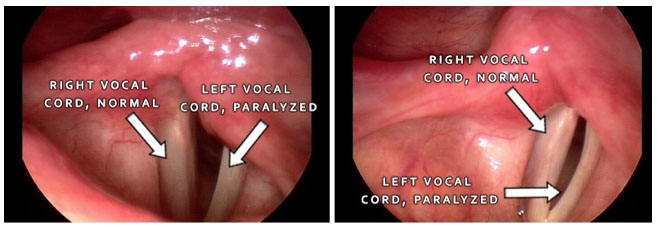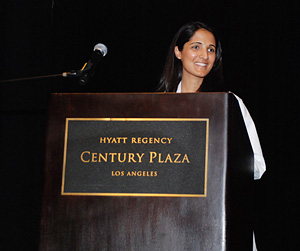- What is Vocal Cord Paralysis? - December 15, 2015
- Have You Heard of Wegener’s? - December 15, 2015
- Otitis Externa – Swimmer’s Ear - December 15, 2015
- Question: How do the ingredients in e-cigarettes and vaporizers affect respiratory health? - August 16, 2019
- Bad Technique and Vocal Injury - January 9, 2019
- Is Edible Marijuana Dangerous for the Voice? Myths Dispelled - December 18, 2018
- Surprise! You have a hemorrhage - January 31, 2018
- Graves’ Disease: Treatment Overview - September 25, 2017
- Adele and the Stigma of Vocal Injury - July 11, 2017
- Vocal Curbside Consult: How does the thyroid affect the voice? - May 16, 2017
- Vocal Curbside Consult: How do hormones affect the voice? - May 3, 2017
- Vocal Curbside Consult: How do emotion and stress affect the voice? - April 17, 2017
- Vocal Curbside Consult: Vocal Recovery After Illness - April 7, 2017
Vocal cord paralysis (VCP), also known as vocal fold paralysis, refers to vocal cord immobility due to dysfunction of the vocal nerves. The vocal cords are V-shaped structures located inside the larynx that control speaking and prevent foreign objects from entering the lungs. Vocal cord paralysis can either be unilateral (paralyzed on one side of the vocal cord) or bilateral (paralyzed on both sides). When the cords are paralyzed, breathing and speaking become difficult.
Symptoms of VCP include:
- Hoarseness
- Noisy breathing (Stridor)
- Loss of vocal range
- Choking/ aspiration
- Frequent breaths while speaking
- Frequent throat clearing
- Inability to speak/project loudly
VCP has various causes. Paralysis may be the result of complications from surgery. Thyroid surgery, for example, carries a risk of damaging the nerves that control the larynx. A stroke can cause paralysis because the sudden interruption of blood flow to the brain can damage the portion of the brain that controls the larynx. Tumors can also cause dysfunction if they compress the nerves that control the larynx.
To clinically diagnose vocal cord paralysis, a laryngologist uses videostroboscopy to assess vocal cord movement. Videostroboscopy is a technology that allows the physician to visualize and record the movement of the vocal cords in higher definition than traditional methods. In cases of unilateral VCP, one of the vocal cords has either partially stopped moving or is completely frozen. In cases of bilateral VCP, both vocal cords have minimal to no movement. In addition to performing a scope, a laryngologist will also assess the patient’s breathing, voice, and swallowing.

Patients with unilateral VCP may have a wispy or breathy voice. The patient can also experience difficulty swallowing (dysphagia). Since the patient cannot voluntarily close the vocal cords, ingested objects, especially liquids, may mistakenly travel down the larynx (windpipe) instead of the esophagus. This is commonly referred to as a sensation that “something went down the wrong pipe”. Patients may also experience shortness of breath and may run out of air when speaking for long durations.
Not unique to unilateral VCP, vocal therapy provides regular exercises for the muscles controlling the vocal cords so that they can compensate effectively. The focus of unilateral VCP treatment lies in the closing of the vocal cords. To create closure, patients may also consider surgery that augments the paralyzed vocal cord. Complications from unilateral VCP surgery may include poor voice quality and breathing difficulty; however, most patients resume speaking normally after several sessions in postoperative therapy. Early treatment is encouraged for symptomatic relief.
Patients with bilateral VCP have symptoms depending on how close to the midline the vocal cords are. If the vocal cords are paralyzed in far proximity from each other, the patient will have a good airway but will experience dysphonia and coughing. If the vocal cords are paralyzed close to each other, the patient will have improved voice and less coughing, but a narrowed airway. Consultation with a vocal therapist is usually the first step in the treatment of bilateral VCP. If therapy is unsuccessful, surgical options are then considered. Treatment decisions for VCP should be made in concert with a qualified laryngologist.
Key Facts:
- Vocal cord paralysis (VCP) can either be unilateral or bilateral.
- VCP prevents proper breathing, speaking, and swallowing.
- Vocal therapy can help correct speaking to a certain degree, but regaining one’s original voice is not guaranteed.
To learn more about Vocal Cord Paralysis or Dr. Reena Gupta, please visit: www.ohni.org.



